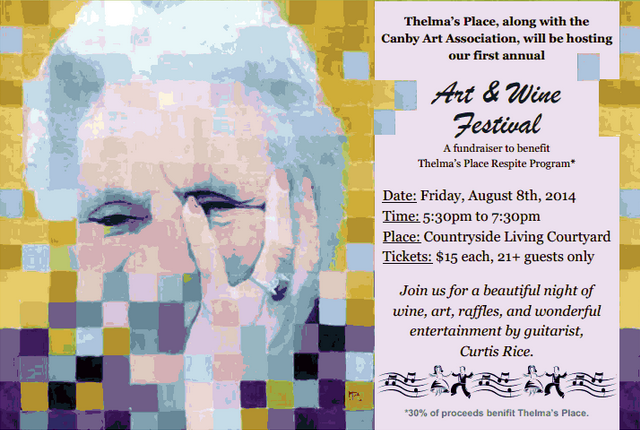Art Therapy and Alzheimer’s
“A picture is worth a thousand words” is an old adage that is true in many different environments…and no less the world of Alzheimer’s and other forms of dementia. We know that art stimulates the senses and also gives the artist and art viewer something to talk about. Art is a natural source of conversation.
Art Therapy is proving to be a powerful tool for treating patients with Alzheimer’s. This is not just about keeping patients busy with another activity or giving them s omething to look at, Art Therapy stimulates the brain. It stimulates emotions that awaken memories and, in some cases, has brought language back into the life of some patients. There is no guarantee of universal results like this, but organizations, such a Memories in the Making® (MIM is a registered program from Alzheimer’s Association) are finding that Art Therapy programs give people with dementia and Alzheimer’s the ability to put their thoughts, emotions and memories on paper in the form of art…those precious memories that are currently under lock and key.
omething to look at, Art Therapy stimulates the brain. It stimulates emotions that awaken memories and, in some cases, has brought language back into the life of some patients. There is no guarantee of universal results like this, but organizations, such a Memories in the Making® (MIM is a registered program from Alzheimer’s Association) are finding that Art Therapy programs give people with dementia and Alzheimer’s the ability to put their thoughts, emotions and memories on paper in the form of art…those precious memories that are currently under lock and key.
Studies show that Art Therapy can promote communication, social interaction and brain function for some Alzheimer’s and dementia patients. In fact, there is evidence that visual art can trigger locked-up memories and emotions; inspiring communication between patients who normally struggle to express themselves. Even more, when dementia patients create the art themselves, that activity stimulates the whole brain. Instead of simply looking at pictures, patients plan, remember, use patterns and incorporate their motor skills. Again, there is no guarantee that Art Therapy will have the same results for everybody, but there is hope for all.
Dementia Patients Create Their Own Works
The Alzheimer’s Foundation of America agrees that art making, in a community setting or at home, can “excite the imagination of people with dementia.” Not to mention, creating art can help a patient recover motor skills similar to how they would in a rehab environment. People still have imaginations intact; even at the very end of their progressive disease. Art therapy gives patients a way to express that resilient nature we all possess.
The mood of the patient is volatile at best with Alzheimer’s. Family members and caregivers alike are keenly aware of the net results of a patient with an adverse mood. One of the key advantages to making art for dementia patients is that it gives patients an outlet for expression and promotes relaxation and improved mood.
Another benefit is that art provides interaction among between all family members who can share in the activity. Consider a grandchild finally having the chance to communicate with a grandparent who’d all but lost all forms of self-expression.
Elizabeth Cockey writes:
“Art therapy, whether done in a community setting or at home, provides an enriched environment that can excite the imagination of individuals with dementia.
When Alzheimer’s disease strips individuals of verbal skills, this recreational activity provides an alternative means by which they can express themselves in a non-threatening and comfortable way. And it can also help individuals recover the use of motor skills in the same manner as physical rehabilitation.
Moreover, art therapists informally report the effectiveness of art making. Some individuals crawl out of their shells. Others, unable to communicate through words, express delight, appear more relaxed or exhibit less behavioral problems. Together in a group setting, participants often develop a newfound sense of camaraderie.
For families, art offers a viable activity that can bring family members together via a new channel of expression especially when words no longer work. It might be just the interaction for younger children who are frightened by the illness”.
Contributed by Elizabeth Cockey
Join use here at Thelma’s Place for the First Annual Art and Wine Festival hosted by Thelma’s Place and the Canby Art Association. This is an excellent opportunity to help raise funds to benefit Thelma’s Respite Program.
